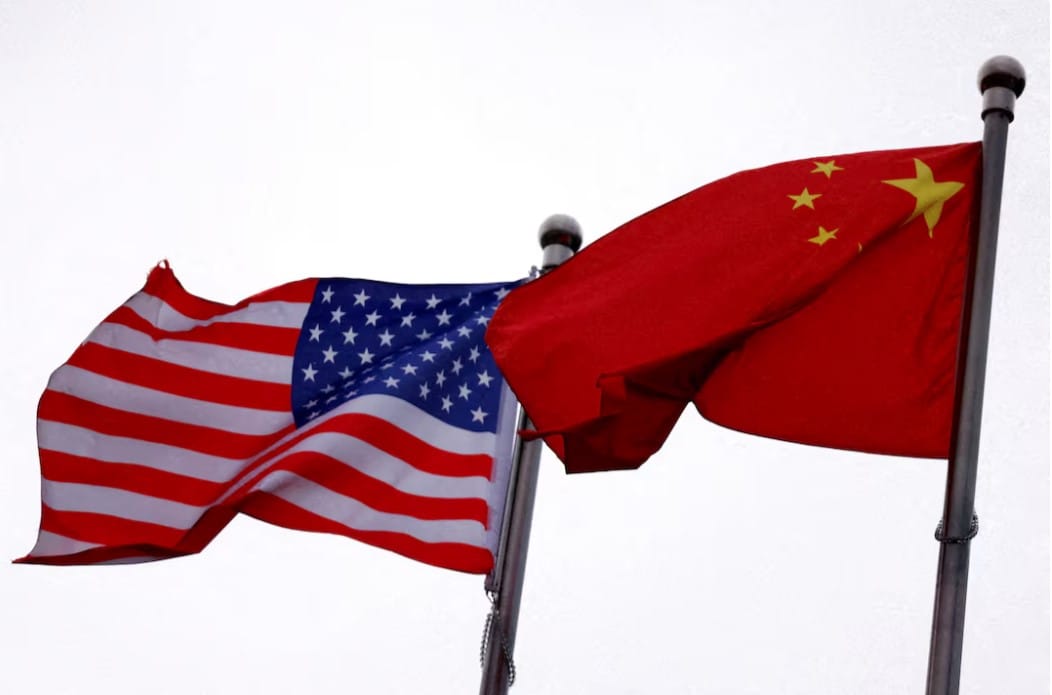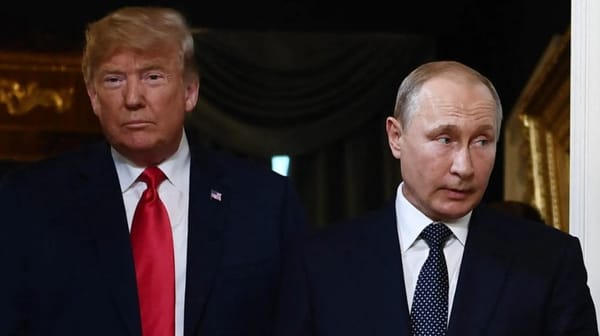U.S. and China Agree to Temporarily Suspend Most Tariffs, Triggering Market Surge

Executive Summary
On May 12, 2025, the United States and China announced a landmark agreement to suspend most of the punitive tariffs imposed on each other over the past several months. This 90-day truce, reached after intensive negotiations in Geneva, marks a critical turning point in the ongoing trade war between the world’s two largest economies. The deal immediately sent global markets soaring, with the Dow Jones Industrial Average jumping over 800 points and investor sentiment rebounding. Both governments hailed the agreement as a step toward de-escalation and a foundation for further negotiations aimed at resolving deeper economic disputes[1][2][3][4][5].
1. Background: The Trade War’s Escalation
The Road to Tariffs
The trade conflict between the U.S. and China intensified in early 2025, when both sides imposed a series of escalating tariffs on hundreds of billions of dollars in goods. The U.S., under President Donald Trump, raised tariffs on Chinese imports to a peak of 145%, targeting a broad array of products from electronics to consumer goods. China retaliated with tariffs as high as 125% on American exports, including agricultural products, automobiles, and technology components[1:1][2:1][5:1][6].
The tit-for-tat measures disrupted global supply chains, raised costs for businesses and consumers, and stoked fears of a global recession. Tensions reached a boiling point in April, when China restricted exports of rare earth metals-critical for U.S. manufacturing and technology sectors-further exacerbating economic uncertainty[1:2].
Economic Fallout
- Stock Market Volatility: U.S. and global markets suffered sharp declines as investors reacted to the uncertainty and risk of prolonged economic disruption.
- Business Anxiety: American manufacturers, farmers, and retailers reported rising costs and shrinking export markets. Chinese firms faced similar pressures, with supply chains rerouted and profits squeezed.
- Global Concerns: Economists warned that the trade war could tip the world economy into recession, with ripple effects across Europe, Asia, and emerging markets[4:1][5:2].
2. The Geneva Breakthrough: Details of the 90-Day Truce
The Negotiations
High-level delegations from both countries met in Geneva over the weekend of May 10–11, 2025. U.S. Treasury Secretary Scott Bessent and Chinese Vice Premier Liu He led the talks, which were described as “intense but constructive.” The resulting joint statement outlined the key terms of the agreement:
- Tariff Reductions: The U.S. will reduce its tariff on Chinese imports from 145% to 30%, while China will lower its tariff on American goods from 125% to 10%[1:3][2:2][3:1][4:2][5:3].
- Suspension Period: Both sides agreed to suspend most of the tariffs for an initial 90-day period, during which further negotiations will continue[1:4][2:3][3:2][4:3][5:4].
- Rare Earths and Countermeasures: China will suspend or revoke recent restrictions on the export of rare earth metals and other critical materials, while the U.S. will roll back additional tariffs imposed in April[1:5][6:1].
- Framework for Dialogue: The agreement establishes a framework for ongoing consultations, with both parties committing to “continued communication, cooperation, and mutual respect”[3:3][4:4][5:5].
Statements from Officials
“We concluded that we have a shared interest. The consensus from both delegations is that neither side wanted a decoupling.”
“Both nations represented their national interests effectively. We share a mutual interest in fostering balanced trade, and the U.S. will continue to work towards that goal.”
“The imposition of such high tariffs was akin to an embargo, which neither side wishes to pursue. Our objective is to promote trade.”
3. Market Reaction: Relief and Rally
Immediate Impact
The announcement of the truce triggered a dramatic rally in global financial markets:
- Dow Jones Industrial Average: Surged more than 800 points in early trading, erasing losses from previous weeks[1:7][3:4][4:8][5:9].
- Stock Futures: Rose sharply, signaling renewed investor confidence[1:8][3:5].
- Dollar Strength: The U.S. dollar strengthened against major currencies, reflecting optimism about economic stability[4:9][5:10].
- Commodities and Bonds: Commodity prices, especially for agricultural products, rebounded as the threat of Chinese retaliatory tariffs receded. Bond yields rose as investors shifted out of safe havens[4:10][5:11].
Business and Investor Sentiment
- Manufacturers and Exporters: Companies dependent on cross-border trade welcomed the move, with industry groups calling it “a necessary reprieve.”
- Retailers: Large U.S. retailers, who had warned of higher prices for consumers, expressed relief and urged both governments to pursue a permanent resolution.
- Farmers: American agricultural groups, hit hard by Chinese tariffs, saw the truce as an opportunity to regain lost market share.
4. Policy and Political Context
U.S. Perspective
President Trump and administration officials framed the agreement as a vindication of their tough approach to trade:
- The White House emphasized that the tariffs had “leveled the playing field” and forced China to the negotiating table[6:2].
- The administration retained a baseline 10% tariff on Chinese goods, arguing it would encourage domestic production and protect American workers[6:3].
- Officials highlighted the deal as a “historic trade win,” contrasting it with previous administrations’ more conciliatory policies[6:4].
Chinese Perspective
- China’s Commerce Ministry confirmed the agreement and characterized the talks as “productive and pragmatic.”
- Chinese officials stressed the need for “balanced and equitable trade” and reiterated their opposition to economic decoupling.
- The Chinese government agreed to suspend or revoke most countermeasures, including restrictions on rare earth exports, signaling a desire to stabilize relations[1:9][4:11].
Ongoing Challenges
Despite the breakthrough, both sides acknowledged that significant differences remain:
- Structural Issues: Disputes over intellectual property, technology transfer, and industrial subsidies are unresolved.
- Long-Term Uncertainty: The 90-day suspension is temporary, and failure to reach a broader agreement could see tariffs snap back into place.
- Political Pressures: Both governments face domestic constituencies demanding a tough stance, complicating the path to compromise.
5. Economic and Strategic Implications
For the U.S. Economy
- Growth Prospects: The truce reduces recession risks and could boost GDP growth by restoring trade flows and business confidence.
- Inflation: Lower tariffs may ease upward pressure on consumer prices, benefiting households and retailers.
- Supply Chains: Companies may reconsider recent moves to shift supply chains out of China, at least temporarily.
For the Chinese Economy
- Export Recovery: Reduced tariffs offer relief to Chinese exporters, particularly in electronics, machinery, and consumer goods.
- Currency Stability: The yuan stabilized against the dollar, reflecting improved investor sentiment.
- Domestic Policy: The government may use the truce to accelerate reforms and support sectors hit hardest by the trade war.
Global Ramifications
- Market Stability: The agreement calms global markets and reduces the risk of a worldwide economic slowdown.
- Allied Economies: U.S. allies in Europe and Asia, who had faced collateral damage from the trade war, welcomed the truce.
- Multilateralism: The deal was reached outside the World Trade Organization framework, raising questions about the future of multilateral trade governance.
6. Next Steps: The Road Ahead
Ongoing Negotiations
Both sides committed to using the 90-day window to pursue a more comprehensive agreement:
- Working Groups: Technical teams will address specific issues, including intellectual property, market access, and technology transfer.
- High-Level Summits: Further meetings between top officials are expected, with the goal of reaching a lasting settlement before the truce expires.
- Monitoring Mechanisms: Both governments agreed to establish mechanisms for monitoring compliance and resolving disputes.
Risks and Uncertainties
- Breakdown Risk: If talks stall or fail, tariffs could return, reigniting economic and market turmoil.
- Political Volatility: Domestic political pressures in both countries could complicate negotiations.
- Global Factors: Geopolitical tensions, including issues unrelated to trade, could spill over and disrupt progress.
7. Conclusion
The U.S.-China agreement to suspend most tariffs for 90 days represents a major de-escalation in a trade conflict that has threatened the global economy for months. The truce provides immediate relief to businesses, consumers, and investors, while creating space for further negotiations on deeper economic issues. The market’s euphoric response underscores the high stakes and pent-up demand for stability.
Yet, the path forward remains uncertain. The next three months will be critical in determining whether this breakthrough leads to a durable peace or merely a temporary pause in hostilities. Both governments face the challenge of balancing domestic political demands with the need for economic cooperation. The world will be watching closely as the U.S. and China attempt to turn a fragile truce into a lasting solution.
“The consensus from both delegations is that neither side wanted a decoupling… The imposition of such high tariffs was akin to an embargo, which neither side wishes to pursue. Our objective is to promote trade.”
“Both nations represented their national interests effectively. We share a mutual interest in fostering balanced trade, and the U.S. will continue to work towards that goal.”
Key Sources:[1:11] The New York Times[2:6] Associated Press[3:6] CBS News[4:14] CBC News[5:14] Reuters[6:5] White House Fact Sheet
This report is based on the latest available information as of May 12, 2025. For ongoing updates, consult official government statements and reputable news outlets.
https://www.nytimes.com/2025/05/12/business/china-us-tariffs.html ↩︎ ↩︎ ↩︎ ↩︎ ↩︎ ↩︎ ↩︎ ↩︎ ↩︎ ↩︎ ↩︎ ↩︎
https://apnews.com/article/china-us-switzerland-tariffs-negotiations-b3f5174d086e39b2522ab848ddad9372 ↩︎ ↩︎ ↩︎ ↩︎ ↩︎ ↩︎ ↩︎
https://www.cbsnews.com/news/us-china-tariffs-deal-90-days-trump-admin-trade-talks-progress/ ↩︎ ↩︎ ↩︎ ↩︎ ↩︎ ↩︎ ↩︎
https://www.cbc.ca/news/world/us-china-tariffs-1.7532503 ↩︎ ↩︎ ↩︎ ↩︎ ↩︎ ↩︎ ↩︎ ↩︎ ↩︎ ↩︎ ↩︎ ↩︎ ↩︎ ↩︎ ↩︎
https://www.reuters.com/world/china/us-china-reach-deal-slash-tariffs-officials-say-2025-05-12/ ↩︎ ↩︎ ↩︎ ↩︎ ↩︎ ↩︎ ↩︎ ↩︎ ↩︎ ↩︎ ↩︎ ↩︎ ↩︎ ↩︎ ↩︎
https://www.whitehouse.gov/fact-sheets/2025/05/fact-sheet-president-donald-j-trump-secures-a-historic-trade-win-for-the-united-states/ ↩︎ ↩︎ ↩︎ ↩︎ ↩︎ ↩︎




